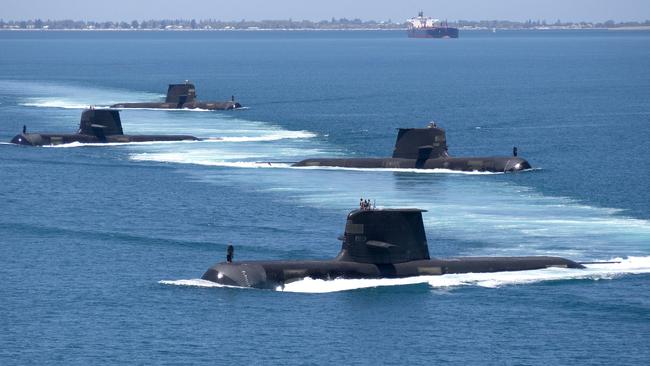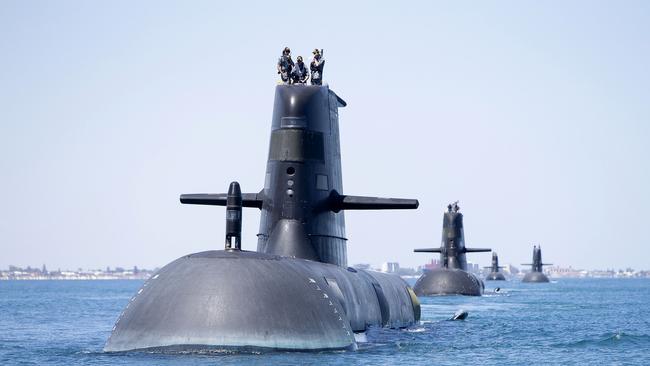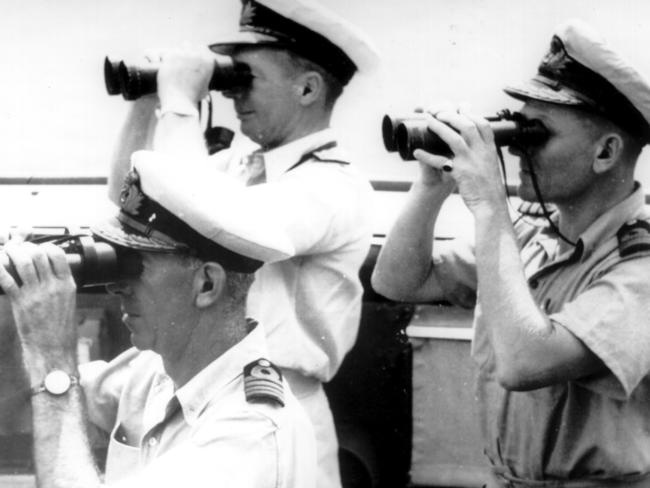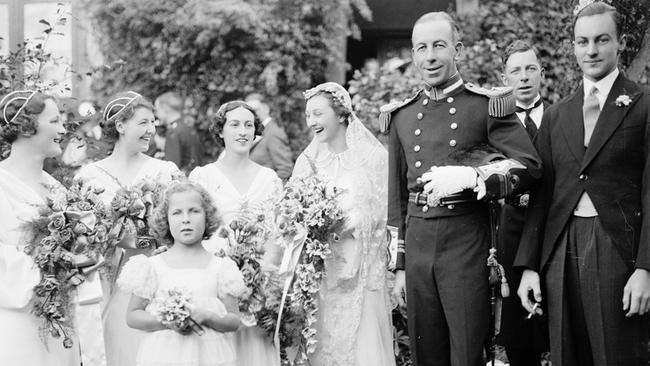Talking Point: Teddy Sheean’s VC denial is a blatant injustice
Tasmanians have excelled in the navy and our contributions to World War II are without question — so why is Teddy Sheean continually denied the honour he deserves? asks Tom Lewis

Opinion
Don't miss out on the headlines from Opinion. Followed categories will be added to My News.
TASMANIA contributed enormously to the navy in World War II. In statistical terms, Tasmania most likely gave the most of any state to the maritime force. For example, in 1941, the year Teddy Sheean joined, there were 448 enlistments from the island and, as a percentage of the male population, that was the highest of any state.
An analysis of 1941 enlistments across the country indicated that Western Australia followed very slightly behind, percentage-wise, with 781 men signing up, and then, in order, South Australia (594), Victoria (1472), NSW (1367) and Queensland with (508). The two territories of the ACT and the NT only yielded one and two members respectively.
Tasmanians who joined the navy also served with considerable distinction.
As a measure of this — and by coincidence, for it was not a factor when their names were decided — three of the navy’s present fleet of submarines are named after Tassie boys.
HMAS Collins commemorates the service of John Collins, arguably the best-known and most distinguished officer of the service.

Collins gained early distinction in 1940 with the sinking of the Italian cruiser Bartolomeo Colleoni with his force of HMAS Sydney and five British destroyers.
He later commanded ships and flotillas in the Pacific war.
Severely wounded in that theatre, Collins nevertheless returned to frontline combat as Commodore in Charge of the Australian Squadron, and was present at the Japanese surrender. After the war, he rose to First Naval Member and Chief of the Naval Staff — the first graduate of the RAN College to head his chosen profession. His retirement from the navy as a Vice Admiral was followed by a period as Australian High Commissioner to New Zealand. Collins was born in Deloraine, the fourth son of Dr and Mrs MJ Collins.
His father, a seagoing surgeon, died a few months before he was born, and he was brought up in the care of his mother. He joined the fledgling navy — it had only been founded the previous year — as a trainee officer, a midshipman, in 1912
Collins saw a meteoric rise through the navy. Naval officers were rated in those days, with reports using a system of one to nine.
Collins scored repeatedly, and most unusually, with 8s and 9s. In warfare his abilities came rapidly to the fore.

His command of the cruiser Sydney, with five British destroyers under him, was testimony to how far he had come in the eyes of the RAN’s parent navy.
The Philippines Sea, where Emile Dechaineux would die, was probably never even mentioned in the young Tasmanian’s geography classes during his time in the Royal Australian Naval College. Jervis Bay, some 120km south of Sydney, was tough on its trainees, but it didn’t go for too much academic detail in the early years of the 20th century.
The beautiful beaches of the bay instead saw the sight of scores of midshipmen sailing small boats, engaging in cross-country runs, and pursuing a hard-paced program of classroom instruction, practical skills and naval theory. Described as an average scholar and sportsman who was popular with his peers, Dechaineux graduated in 1919.
The navy became his life, and Dechaineux had few opportunities to return to Tasmania. But his father, an eminent artist, must have followed his career with some pride — he painted a portrait of his son that hangs in the Tasmanian Art Gallery.
Dechaineux was born in Launceston on October 3, 1902. His mother died just six years later, and the family moved to Hobart. They lived at Elwick Junction, north of Hobart, near the river Derwent, which may have given rise to an interest in matters maritime, as the river was a busy highway for freighters and small passenger vessels.
Dechaineux was enrolled as a day-student at The Friends’ School. His entry card can be found in one of many dusty boxes of entrants’ details, and he is one of many Friends’ scholars who have distinguished themselves.
In 1934, Dechaineux returned to Hobart to marry Mary Harbottle, the wedding taking place in

St David’s Cathedral. Traffic was stopped across Davey St to allow the newlywed couple to pass under the arch of swords held up by Dechaineux’s naval friends.
In warfare, Dechaineux commanded the RN destroyer Vivacious during the Dunkirk operations; another —– HMS Eglington — in the north Atlantic; and HMAS Warramunga in the Pacific.
He was then given command of the RAN’s most prestigious seagoing position: Commanding Officer of the heavy cruiser HMAS Australia. It was in battle on her bridge that he lost his life, as the ship was struck by a kamikaze — coincidentally the same one that nearly killed John Collins, on board as a commodore commanding a flotilla of ships.
More Tasmanians have likely learnt about Teddy Sheean in the past few months than at any time before.
The 18-year-old’s last moments, envisioned by the glorious painting by Dale Marsh, are now embedded in the minds of many as one of their war heroes. His bravery saving his shipmates as HMAS Armidale fought through its last moments under Japanese air attack is undoubted — inquiry after inquiry has confirmed it. The last tribunal investigation, to which I gave evidence, confirmed he should be given the highest bravery award of all. That this should be turned down by the Federal Government is more than strange.
It is ridiculous that in its refusal the words “no manifest injustice” should be used.
What more injustice can there be that the navy had to pass its recommendation for bravery through London, while the army and the RAAF’s were processed by Canberra?
Tasmanians deserve better than this. In the words of the motto of the submarine HMAS Sheean — Fight On!
Dr Tom Lewis OAM is the author of Honour Denied, the biography of Teddy Sheean, which argues for a VC for the Tasmanian sailor. A military historian, Dr Lewis is a former naval officer who grew up in Hobart


